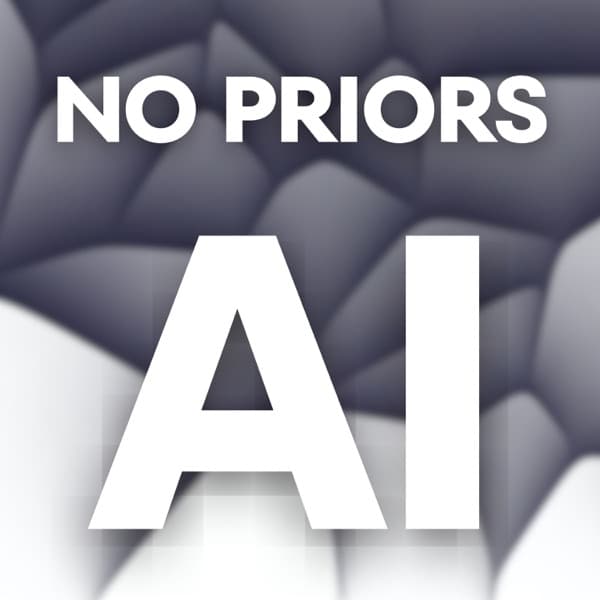Lenny's Podcast: Product | Growth | Career: The discussion focuses on the evolving role of AI in product development, emphasizing the importance of creative thinking and adaptability in the face of advancing AI capabilities.
Lenny's Podcast: Product | Growth | Career - OpenAI researcher on why soft skills are the future of work | Karina Nguyen (Research at OpenAI, ex-Anthropic)

The conversation highlights the shift in skills needed for product teams as AI becomes more integrated into development processes. Creative thinking and the ability to iterate quickly based on user feedback are emphasized as crucial skills. The discussion also touches on the challenges of training AI models to be creative and the potential of synthetic data to enhance model capabilities. The speaker shares insights from their experience at OpenAI and Anthropic, noting the importance of collaboration between researchers and engineers in developing innovative AI products. The use of synthetic data for rapid model iteration and the role of evaluations in refining AI behavior are discussed as key strategies in AI development.
Key Points:
- Creative thinking and adaptability are crucial skills for product teams as AI advances.
- Synthetic data is vital for training AI models and enhancing their capabilities.
- Collaboration between researchers and engineers is essential for innovative AI development.
- Evaluations play a key role in refining AI behavior and ensuring model effectiveness.
- AI's role in automating redundant tasks is expanding, impacting various industries.
Details:
1. 🚀 Building the Cutting Edge of AI
2. 🔄 Transition from Front-End to Research
- The speaker realized that cloud technology advancements, such as automated code generation and deployment, are significantly enhancing the capabilities of front-end engineering, driving the decision to shift towards research.
- The transition was motivated by the increasing role of cloud technologies in automating coding tasks, freeing up time for more strategic and innovative work.
- The shift to research involves exploring new methodologies and innovations that can further leverage cloud technology to improve software development processes.
3. 🤔 Skills for Future Product Teams
- Creative thinking is essential for generating a wide range of ideas and filtering them to build the best product experience.
- Teams must focus on developing innovative solutions that meet user needs and business goals.
- Encouraging a culture of experimentation and learning from failures can lead to breakthroughs in product development.
- Utilizing diverse perspectives within the team can enhance creativity and lead to more comprehensive solutions.
4. 🧠 Misunderstandings About Model Creation
- Teaching AI models aesthetic sense or advanced creativity remains challenging due to the inherent complexity of human creativity, highlighting a significant gap in AI capabilities.
- AI models often struggle with self-awareness issues, such as understanding the absence of a physical body, leading to confusion when this concept is introduced.
- These challenges underline the limitations of AI in replicating nuanced human experiences and understanding, necessitating further research and development to bridge these gaps.
5. 🎙️ Introducing Karina Nguyen
- Karina Nguyen is an AI researcher at OpenAI, contributing to projects like Canvas, Tasks, and the O1 chain of thought model.
- Formerly at Anthropic, she led post-training and evaluation for Cloud3 models and developed the document upload feature with 100k context windows.
- Her diverse skill set spans roles at New York Times, Dropbox, and Square, showcasing expertise in engineering and design.
- The discussion highlights operations of AI teams at OpenAI, essential skills in AI, and the role of synthetic data in advancing model intelligence.
- Karina transitioned from engineering to research, motivated by the capabilities of LLMs in coding.
6. 🛠️ Interpreting Customer Insights with AI
6.1. Introduction to Interpret and Its Value
6.2. Leveraging Customer Feedback in Product Development
6.3. Harnessing AI for Tailored Insights
7. 🔒 Vanta's Role in Security Automation
- Connect customer insights to revenue and operational data in your CRM or data warehouse to map the business impact of each customer need and prioritize confidently.
- Empower your entire team to easily take action on use cases like win-loss analysis, critical bug detection, and identifying drivers of churn with Interpret's AI assistant, Wisdom.
- Automate your feedback loops and prioritize your roadmap with confidence like Notion, Canva, and Linear by visiting enterpret.com slash lenny for a limited time offer of two free months on an annual plan.
8. 🧩 The Role of AI in Product Development
- Vanta was started in 2018, focusing on helping founders build security programs and achieve compliance certifications like SOC 2 or ISO 2701.
- Vanta currently assists over 9,000 companies, including notable startups such as Atlassian, Ramp, and Langchain, in starting and scaling security programs.
- The company helps build trust by automating compliance, centralizing GRC, and accelerating security reviews.
- Vanta leverages AI technologies to automate and streamline the compliance process, reducing the time and effort needed for companies to achieve necessary certifications.
- The use of AI in Vanta's processes enables real-time monitoring and alerts, enhancing overall security measures for client companies.
- By integrating AI, Vanta improves the efficiency and accuracy of security audits, ensuring robust compliance with industry standards.
9. 🎥 The Power of Video Messaging with Loom
10. 🌐 Future of AI and Work Dynamics
10.1. AI Adoption and Usage Trends
10.2. Model Training and Data Challenges
10.3. Evolving AI Capabilities
10.4. Innovation in AI Product Development
10.5. Operational Strategies in AI Development
10.6. Collaborative AI Development Processes
10.7. Strategic Insights and Future Directions
10.8. Skill Development and Future Workplaces
10.9. Long-term AI Research and Implications
11. 🖥️ Canvas and Tasks: AI's Role in Workflows
11.1. Data Integration and Recommendations
11.2. AI in Data Comprehension and Synthesis
11.3. Soft Skills and Organizational Effectiveness
11.4. Insights from Anthropic and OpenAI
11.5. Cloud's Integration and Social Element
11.6. AI Trust and Personalization
12. 🔍 Exploring Synthetic Data and AI's Future
12.1. Potential of Slack Bots with LLMs
12.2. Enhanced Contextual Capabilities
12.3. Practical Use of AI for Content Summarization
12.4. Simulated Personas for Interaction
12.5. AI-driven Content Interaction
12.6. Content Transformation Across Media
12.7. Chat as a Powerful Interface
13. 💡 Insights on AI Trends and Personal Reflections
13.1. Creative Applications and Product Launch
13.2. Operator: Virtual Assistant Capabilities
13.3. Developing Human-like AI Interactions
13.4. Personal Reflections and Future Aspirations
13.5. Opportunities and Engagement
Included Channels
 Lex Fridman Podcast
Lex Fridman Podcast All-In with Chamath, Jason, Sacks & Friedberg
All-In with Chamath, Jason, Sacks & Friedberg Modern Wisdom
Modern Wisdom Greymatter
Greymatter In Depth
In Depth a16z Podcast
a16z Podcast Lenny's Podcast: Product | Growth | Career
Lenny's Podcast: Product | Growth | Career Lightcone Podcast
Lightcone Podcast No Priors AI
No Priors AI The Twenty Minute VC (20VC): Venture Capital | Startup Funding | The Pitch
The Twenty Minute VC (20VC): Venture Capital | Startup Funding | The Pitch How I Built This with Guy Raz
How I Built This with Guy Raz BG2Pod with Brad Gerstner and Bill Gurley
BG2Pod with Brad Gerstner and Bill Gurley Latent Space: The AI Engineer Podcast
Latent Space: The AI Engineer Podcast




